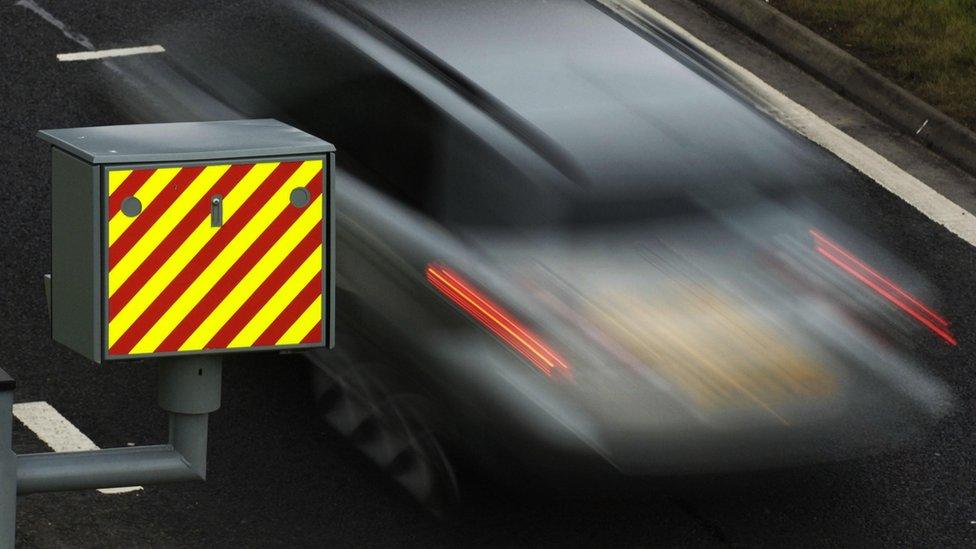Two thirds of fixed speed cameras are not working
- Published

A speed camera in Edinburgh - but is it working?
Less than a third (29%) of fixed speed cameras in Scotland are actually switched on and catching offenders.
Figures obtained by the Press Association reveal only 50 fixed speed cameras are actively catching speeding drivers north of the border.
A further 123 cameras are installed on Scottish roads but are not operational.
Police Scotland said road safety remained a priority and that fixed cameras were part of a range of measures used to influence drivers.
The figures emerged in a survey of UK police forces, which revealed that about half of fixed speed traps are active.
A Freedom of Information request was sent to all 45 forces and their speed camera partnerships asking how many fixed speed cameras they have and how many are active.
The 36 which responded with data had a total 2,838 cameras, of which 1,486 (52%) were active. Nine refused to disclose the information or failed to respond.
In Scotland, 50 out of 173 cameras were working - while four English forces revealed that all of their cameras were switched off.
Neil Greig said speed cameras are a vital tool in keeping roads safe
Neil Greig, of the charity IAM Roadsmart, told 大象传媒 Scotland that all fixed speed cameras should be operational.
"There's no doubt that people slow down, no matter whether there's a [active] camera there," he said.
"There's no way of knowing there's a camera within the housing so people do slow down.
"But the ultimate deterrent is knowing that if you flash that camera, you're going to get a ticket through the post in 14 days time.
"We think it's very important that drivers aren't tempted to take a chance to maybe have a go and see whether that camera is active.
"They need to be sure that the camera is active and we do look to see a 100% coverage."
However, Police Scotland's head of road policing said speed cameras were not the only way of improving road safety.
Driver behaviour
Chief Superintendent Stewart Carle said: "Road safety is a key priority, not just for Police Scotland but also for the people who stay in our communities.
"Speed cameras are not the sole means of influencing driver behaviour in order to keep people safe. They have been proven to reduce injuries and road deaths in the locations where they are placed.
"Fixed and mobile cameras are deployed according to criteria set down in the Scottish Safety Camera Programme Handbook.
"This is based on collision data and speed analysis and it has been shown that a mix of both types of cameras is appropriate to positively influence driver behaviour."
Claire Armstrong, co-founder of lobby group Safe Speed, which campaigns for more traffic police officers rather than speed cameras, said the investigation "proves police forces don't believe in cameras".
She said: "Forces are conning the public into thinking cameras are there for road safety because, if they really thought that, every single one of them would be on.
"They are a flawed road safety policy and the only way to truly improve that is with more traffic police officers on the roads."
She added: "I am glad there are only 52% working - and we'd actually like to see less."
- Published21 July 2015